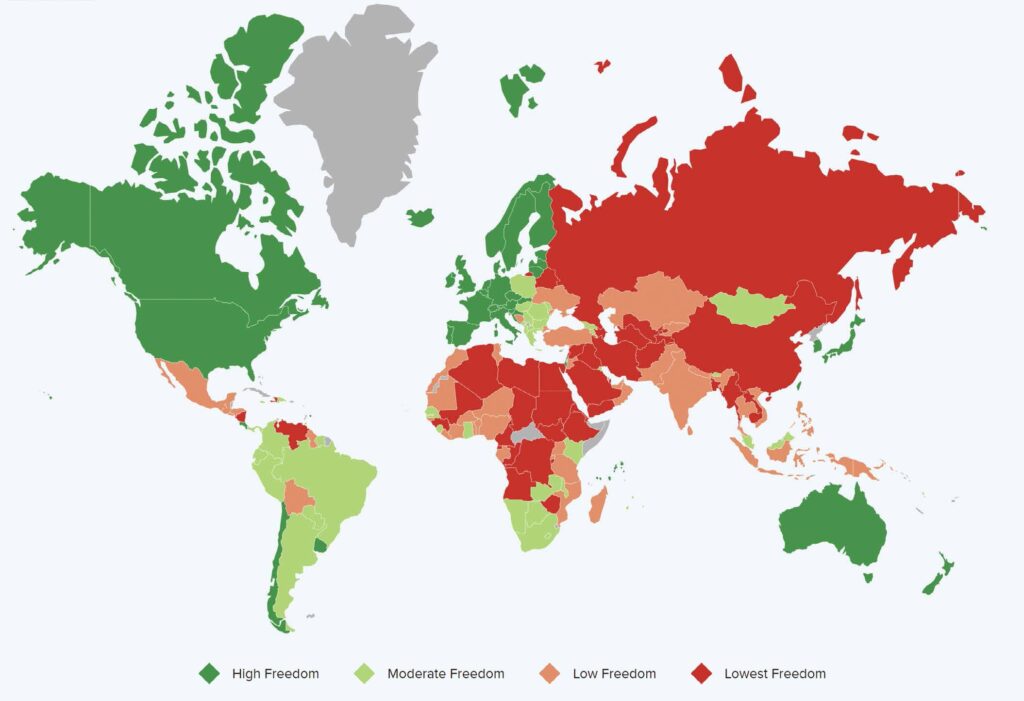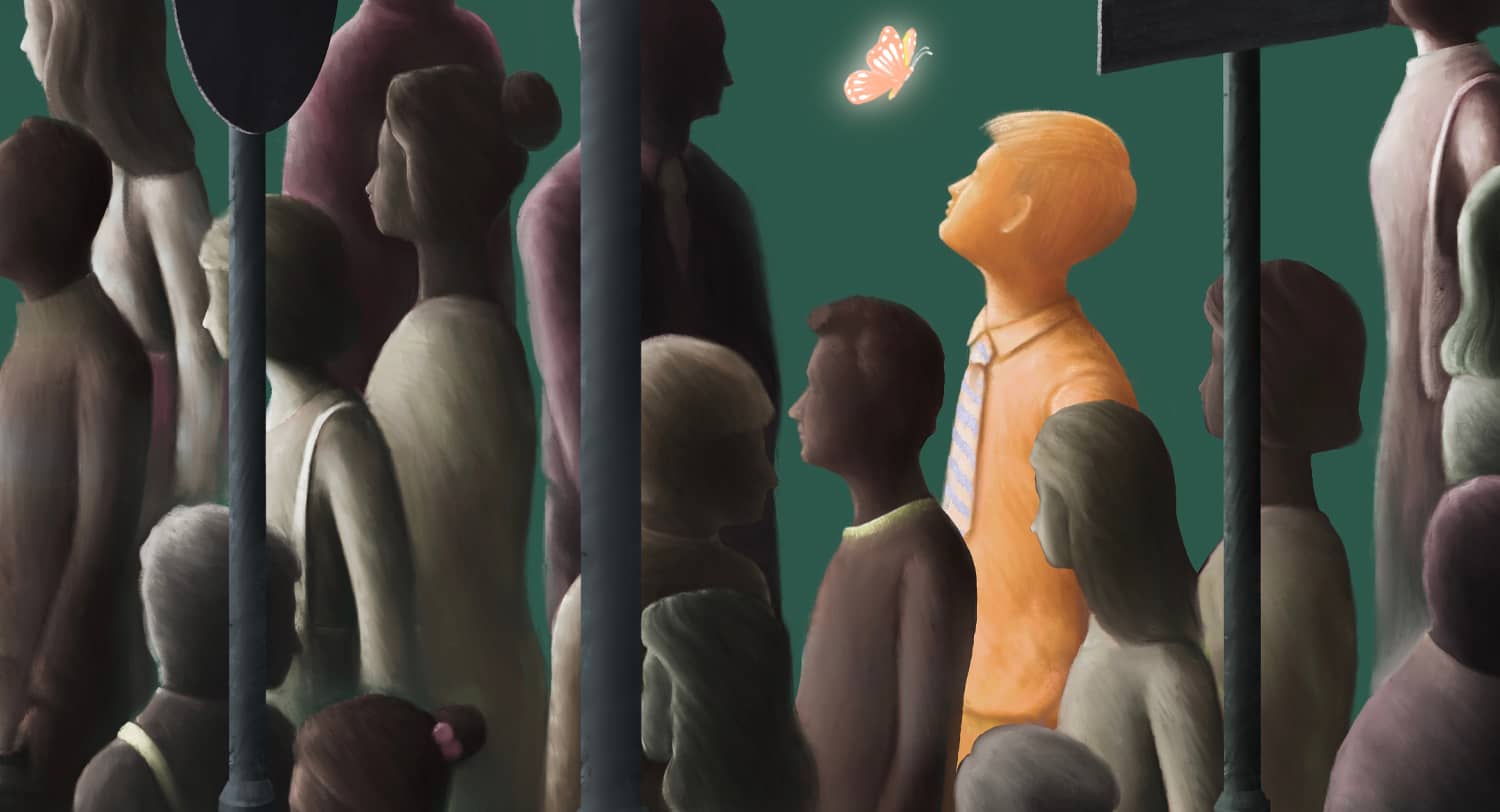The Global South has a choice between a freedom-based and an authoritarian development model. External powers led by China and Russia promote the latter in, for example, Sub-Saharan Africa, by far the least developed region of the world.
Russian disinformation campaigns have occurred in at least 15 Sub-Saharan African countries, according to the Africa Center for Strategic Studies. Particularly through the Wagner Group, Russia also has a long history of propping up dictatorial regimes.
China’s Belt and Road infrastructure projects have earned it geostrategic and political influence in many regions including Africa. They include the construction, refurbishment, and maintenance of many parliament buildings – rather ironic since China is a dictatorship. China’s investments often involve debt traps and other opaque agreements, and do not train and employ local labor in construction and operation.
Iran has its own malign influence operations in Sub-Saharan African countries with large Muslim populations. It supported recent military coups in Mali, Burkina Faso, and Niger and encouraged these countries to distance themselves from America and France, ending long-standing counter-terrorist agreements.
The free world cannot be silent in this crucial debate of our times. Making the case for freedom is as pressing as ever, not only arguing for the moral superiority of free institutions, but also by making the case that the surest path to prosperity is by way of democracy, rule of law, and a market economy. In this sense, efforts should be primarily directed to provide people in positions of authority and civil society leaders in the Global South with facts and data showing the benefits of freedom for their citizens.
The Freedom and Prosperity Indexes pioneered by the Atlantic Council compare the socio-economic outcomes delivered by freedom-based and authoritarian models. The distinctive mark of these indexes lays on a comprehensive understanding about what constitutes a free and prosperous society.
The Freedom Index is composed of three sub-indexes – legal, political, and economic – that broadly cover all components of the institutional framework of a country. The Prosperity Index similarly takes a wide-ranging view of development, going beyond material measures such as GDP per capita to include measures of education, health, environment, inequality, and treatment of minorities. The Indexes use 100,000 data points to cover 164 countries between 1995 and 2023. This extended time coverage allows an analysis of the relation between freedom and prosperity using advanced empirical techniques.
The recently published 2024 Freedom and Prosperity Report includes several analytical tests that unambiguously point to one conclusion: freedom is the surest path to prosperity. As would be expected, countries with the highest scores in the Freedom Index are also those who receive the highest prosperity scores. The correlation between both measures for the year 2023 is really high (0.71).
But correlation does not imply causation, and thus we further explored the relationship between freedom and prosperity by looking at changes over time, and not just current levels.
When we compare the total change in the Freedom Index for the period 1995-2023 against the change over the same period in the Prosperity Index, we obtain a 0.49 correlation coefficient. This is a surprisingly high value for a comparison in changes especially because it substantially reduces the importance of country-specific characteristics.
In short, countries that have moved towards freer institutional frameworks have experienced larger improvements in prosperity irrespective of their specific situation at the beginning of the sample period.

Continuing with the example of Sub-Saharan Africa, the Indexes show that countries like Angola, Rwanda or Kenya are among the top improvers in terms of freedom since 1995, all increasing above 15 points. These countries have also experienced above-average growth in prosperity (12.7, 17.5, and 17.6 points, respectively). On the contrary, Mali, Benin and Congo present negative changes in freedom in the last three decades (falling between 7 and 12 points), and their prosperity performance is substantially lower (all growing less than 9 points). The 2024 Atlas: Freedom and Prosperity Around the World, a collection of short country and regional case studies based on the Indexes, further confirms these results with several other examples of success and failure.
In a second exercise, we divided the 164 countries covered by the indexes into three groups of a equal number of countries, ranked according to the total change in their Freedom Index scores between 1995 and 2023. Comparing prosperity growth for the three groups yields large and statistically significant differences. Those countries with the largest freedom improvement grew 50 percent more than those in the bottom third.
Crucial for policymakers is this insight: the effects of freedom reforms are only visible and substantial in the medium-to-long run. In the initial years of the comparison, the trajectories of the three groups do not present statistically significant differences. In political terms, governments in the Global South need to understand that the short-term costs of their pro-freedom reforms will take time to result in benefits.
In order to deepen our understanding of the time lag between freedom and prosperity, we made use of a more sophisticated econometric technique – local linear projections. First, we identify episodes of substantial movements in the freedom index, across all countries and years in our sample. Then, we estimate the effects of such “freedom shocks” at different time horizons. The results of our analysis confirm the insight above. The contemporaneous effect of a shock is rather small, but over time it compounds, generating a much larger prosperity rise in the long run. In particular, our estimates suggest that the cumulative effect of a substantial movement towards freer institutions generates an increase in prosperity that multiplies by a factor of 7 after 20 years.
Last but not least: Freedom contributes to prosperity not only within states but also by promoting peace among states. Without peace there can be no prosperity. Democracies tend not to go to war with other democracies and they tend to make common cause in protecting and promoting freedom, rule of law, and peace around the world.
Today’s world peace is shaken by wars started and threatened by the Beijing-Moscow-Tehran axis. In a seminal article in Foreign Affairs, Robert O’Brien argues that military power alone will not be enough to thwart and deter these axis powers. We agree with his conclusion: “Doing so will require strong alliances among the free countries of the world.”

